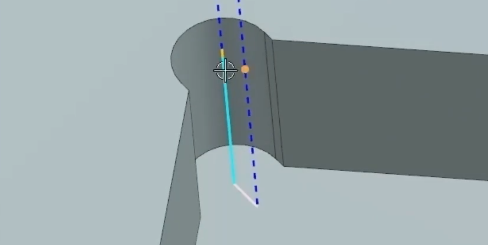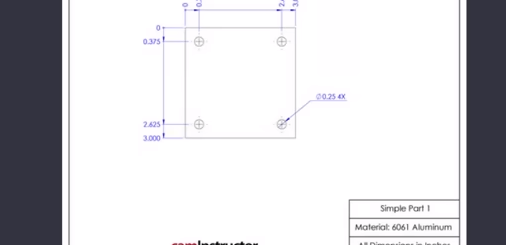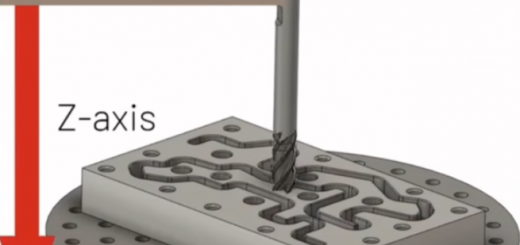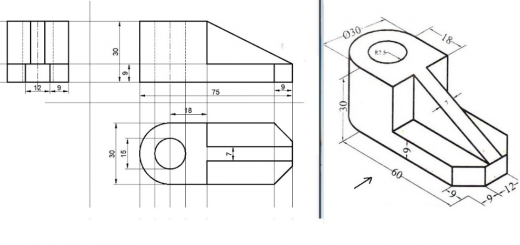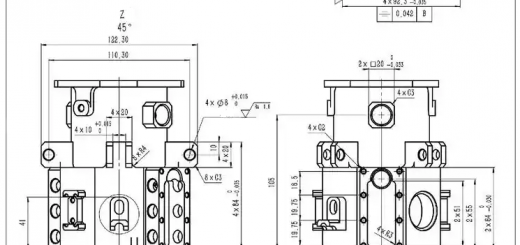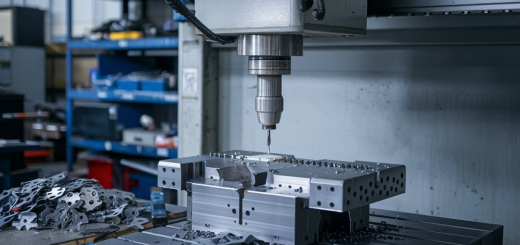Ion Nitriding Process: Principles, Parameters, Advantages, Applications, Ion Nitriding vs Gas Nitriding
In the CNC machining process, the post-processing stage plays a key role. This stage not only affects the final quality of the parts but is also key to ensuring their stable performance and prolonging their lifespan. Post-processing covers various aspects, among which surface treatment is particularly prominent. The application of ion nitriding technology has brought revolutionary changes to modern industrial manufacturing. Here we will introduce the Ion Nitriding Process in detail, covering its work principles, advantages, applications, and differences from gas nitriding.

1. What is Ion Nitriding Surface Process?
Ion nitriding aka plasma nitriding is an ion chemical heat treatment process that utilizes the phenomenon of glow discharge to ionize nitrogen-containing gases and bombard the surface of parts with nitrogen ions for heating and nitriding. Ion nitriding technology is a high-temperature plasma surface treatment technique. In this technique, the workpiece is placed in high-temperature plasma, and through processes such as ion bombardment and surface reactions, a nitride film is formed on the surface of the workpiece. Due to the high energy and high reactivity of the high-temperature plasma, deep penetration and uniform treatment of the surface can be achieved in a short time, improving the hardness and wear resistance of the workpiece surface.
2. Principles and Process of Ion Nitriding
Here we explain the principles of this surface treatment process by breaking down the ion nitriding process and parameters:
Basic Process of Ion Nitriding:
- Cathode Sputtering Principle:
- In the ion nitriding furnace, parts act as the cathode and the furnace shell as the anode. Ammonia is ionized under a specific vacuum (1.3*10^2—10^3 Pa) and a certain inter-electrode voltage. Under the high voltage electric field of glow discharge, ammonia is ionized into nitrogen cations, hydrogen cations, and electrons. The cations are accelerated by the electric field to bombard the surface, part of which is converted into thermal energy to heat the parts, and another part allows ions to directly penetrate into the parts or produce cathode sputtering.
- The bombarded iron atoms and nitrogen atoms that gain electrons combine to form FeN and are adsorbed on the part surface. Under high temperature and continued ion bombardment, FeN converts into lower valence Fe2N, Fe2-3N, Fe4N, α-Fe(N), etc.
- Sputtering:
Ion bombardment causes surface atom sputtering and forms a thin (0.05MM) dislocation layer, promoting nitrogen atom diffusion, changing the absorption of nitrogen atoms on the surface, and purifying the workpiece surface through ion sputtering action. - Adsorption:
While breaking down into nitrogen-low compounds, active nitrogen is released. Part of it diffuses into the interior of the part to form a nitriding layer, and another part returns to re-participate in the reaction, enhancing the surface nitrogen potential. The sputtered iron atoms become a powerful “nitrogen carrier” and are adsorbed on the part surface. - Glow Layer:
In the furnace atmosphere, when excited atoms return to the ground state or electrons combine to form neutral atoms, they emit a glow, forming a glow layer several millimeters thick around the parts, with hydrogen glowing light blue, nitrogen purple, and ammonia purple-blue.
Basic Parameters of Ion Nitriding:
Ion nitriding involves several parameters, including common factors such as nitriding temperature and time, as well as furnace gas pressure, gas source, gas pressure and flow, voltage and current, and pump-out rate.
- Ion Nitriding Temperature and Time:
- The ion nitriding temperature is generally the same as that for gas nitriding, typically 500540°C. Different materials have an optimal corresponding value between hardness and temperature, typically in the range of 450540°C. When the temperature exceeds 590°C, the hardness significantly decreases due to the accumulation of nitrides.
- The heating rate mainly depends on the surface current density of the workpiece, the ratio of the workpiece volume to the area producing glow, and the complexity of the workpiece and its cooling conditions. To reduce deformation, the heating rate should not be too rapid, typically 150~250°C/h. The holding temperature should be stable with minimal fluctuations. The stability of the holding temperature is closely related to the furnace pressure and voltage. By stabilizing the furnace pressure, the current density is stabilized, thereby stabilizing the holding temperature; similarly, by stabilizing the voltage, the current density is stabilized, thereby improving the holding temperature stability.
- The holding time for nitriding depends on the material of the nitrided parts and the required thickness and hardness of the nitriding layer, ranging from several minutes to several hours. When the nitriding time is within 20 hours, the speed of ion nitriding is significantly greater than that of gas nitriding; when the nitriding time exceeds 20 hours, the speeds of the two types of nitriding are similar. Therefore, ion nitriding is most suitable for parts with a nitriding layer thickness of less than 0.5mm. For a nitriding layer depth of 0.20.5mm, a typical holding time of 820 hours is sufficient.
Furnace Gas Pressure:
Furnace gas pressure is an important parameter in ion nitriding. After the furnace is empty or loaded with workpieces, the gas pressure should be able to reach below 6.67 Pa. If this value is not achieved, it indicates that the furnace body is leaking air, which causes oxidation of the metal surface during the nitriding process, affecting the nitriding quality; air leakage during cooling can cause oxidation coloring of the workpieces.
Furnace gas pressure is related to the gas supply flow and pump-out rate. Under certain pressure conditions, the higher the pump-out rate of the vacuum pump, the greater the gas flow and the greater the consumption of ammonia gas. In ion nitriding, gas pressure directly affects the size of the current density. Higher gas pressure results in a larger current density, which in turn affects the heating rate and holding temperature. In practical operation, the gas pressure should be between 133 and 1066 Pa, typically 266 to 800 Pa.
Furnace gas pressure also affects the structure of the nitriding layer. Under high gas pressure, the ε-phase content in the compound layer increases, while low gas pressure tends to produce the γ′ phase. When the gas pressure is between 40 and 2660 Pa, a compound layer is less likely to form.
Gas pressure also determines the thickness of the glow layer; the higher the gas pressure, the smaller the dk, and the thinner the glow layer, which is more conducive to heating.
Voltage:
The voltage required for ion nitriding depends on factors such as furnace gas pressure, current density, workpiece temperature, and the distance between the anode and cathode. When other factors are constant, an increase in voltage results in an increase in current density; an increase in gas pressure results in a decrease in voltage. In practical operation, voltage and gas pressure are adjusted to control the size of the current, achieving the purposes of heating and holding. The voltage during the holding stage is generally 500~700V.
Current Density:
Current density directly affects the amount of heat supplied to the workpiece, mainly selected based on the nitriding temperature requirements. During the heating stage, more heat is needed, so the current density is larger; during the holding stage, less heat is needed, so the current density is smaller. The current density is generally between 0.5 and 20 mA/cm², commonly used at 0.5~3 mA/cm².
Gas Source:
Ion nitriding generally uses ammonia gas as the gas source, which is directly introduced into the furnace for nitriding, making the operation simple and convenient. Ammonia can also be decomposed into nitrogen and hydrogen gases at 660~670°C before being introduced into the nitriding furnace; alternatively, a mixture of nitrogen and hydrogen gases can be used as the gas source. The latter two gas sources can achieve a more uniform temperature distribution and nitriding layer than direct use of ammonia gas. Adjusting the ratio of nitrogen and hydrogen gases can also obtain the desired nitriding layer structure and thickness of the ε-phase layer. The volume ratio of nitrogen and hydrogen gases can vary between 1:9 and 9:1, with a larger proportion of hydrogen resulting in a thinner ε-phase layer in the nitriding layer.
Advantages of Ion Nitriding
Ion nitriding has several characteristics that make it widely used:
- High Hardness and Wear Resistance:
Ion nitriding technology can form a very hard nitride film on the surface of the workpiece, with hardness typically reaching 1000-3000HV. This high-hardness film can significantly improve the workpiece’s wear resistance, scratch resistance, and corrosion resistance, giving the workpiece a longer service life. - Good Adhesion:
The nitride film formed by ion nitriding technology on the surface of the workpiece has good bonding strength with the metal substrate. During the ion nitriding process, nitrogen ions are quickly absorbed and diffused on the metal surface and chemically react with the metal surface to form metal nitrides, thus achieving physical and chemical bonding between the film and the substrate, and providing good adhesion. - Uniformity of the Film:
Ion nitriding technology, by controlling parameters such as plasma treatment temperature, gas concentration, and treatment time, can achieve uniform growth of the nitride film on the entire surface of the workpiece. Generally, ion nitriding technology can form a uniform and dense nitride film on the surface of the workpiece. - Energy Saving and Environmental Protection:
Compared to traditional heat treatment techniques, ion nitriding technology has the advantages of energy saving and environmental protection. Traditional heat treatment techniques require high-temperature heating furnaces, consuming more energy, while ion nitriding technology can achieve surface treatment in a short time and does not require preheating and cooling processes, saving energy. Additionally, ion nitriding technology does not produce harmful gases or wastewater, making it environmentally friendly.
Application of Ion Nitriding Process
As a chemical heat treatment method that strengthens the metal surface, ion nitriding technology has significant advantages and thus has a wide range of application fields. Here are the main application fields of ion nitriding technology:
- Tool and Mold Field:
Ion nitriding technology can significantly improve the surface hardness and wear resistance of tools and molds, thereby enhancing their service life and machining efficiency. In mold manufacturing and tool processing, ion nitriding technology is widely used, especially in situations requiring high precision and durability. - Aerospace Field:
In the aerospace field, materials are required to have excellent strength and corrosion resistance. Ion nitriding technology can provide excellent surface performance for key components in aerospace, ensuring their safety and reliability in extreme environments. - Maritime Field:
Ships operate in marine environments for extended periods, facing harsh conditions such as salt corrosion and wave impact. Ion nitriding technology can effectively improve the corrosion resistance and wear resistance of key ship components, prolonging their service life. - Oil Field:
In oil extraction and processing, equipment often comes into contact with high-temperature and high-pressure oil and natural gas. Ion nitriding technology can strengthen the surface performance of equipment, improving its resistance to high temperatures, high pressures, and corrosion. - Automotive Field:
Automotive components, especially key components of engines and transmission systems, need to withstand high loads and high-speed operation. Ion nitriding technology can improve the surface hardness and wear resistance of these components, enhancing their performance and reliability.
In addition, ion nitriding technology is also applied in many other fields, such as power, electronics, chemical, and mechanical industries. As science and technology continue to advance and processes continue to improve, the application fields of ion nitriding technology will further expand.
Differences Between Ion Nitriding and Gas Nitriding
Ion nitriding has clear advantages in terms of processing precision, speed, and surface quality, making it particularly suitable for precision parts and surface hardening treatments with high requirements, while gas nitriding has certain competitive advantages in terms of processing scale, depth, and cost-effectiveness.
Ion nitriding and gas nitriding are both technologies used for surface modification treatment of metal materials, and their main differences are as follows:
- Principle Differences:
- Ion Nitriding:
Ion nitriding is a process based on a combination of physical and chemical processes. In a vacuum environment, ion bombardment of the workpiece surface is used, while nitrogen ions are injected, allowing nitrogen atoms to penetrate the workpiece surface and chemically react with it to form a hard nitriding layer. This process, due to the use of ion beam energy, results in a more uniform formation of the nitriding layer and a faster nitriding speed. - Gas Nitriding:
Also known as traditional gas nitriding or chemical nitriding, this process usually uses ammonia gas as the nitrogen source. The workpiece reacts chemically with ammonia gas at a certain temperature, allowing nitrogen atoms to diffuse into the workpiece surface to form a nitriding layer. This process is dominated by chemical reactions and is influenced by gas flow and diffusion rates.
Feature Comparison:
- Advantages of Ion Nitriding:
Ion nitriding has the advantages of fast nitriding speed, short production cycle, especially in shallow layer nitriding, where the speed is 2~4 times that of gas nitriding; relatively low temperature control, which can start nitriding treatment at around 380°C, reducing workpiece deformation; high surface quality, no oxidation layer, suitable for high-precision part treatment; strong controllability, allowing more precise control of the nitriding layer’s structure and organization through adjustment of process parameters. - Advantages of Gas Nitriding:
Gas nitriding can achieve a deeper nitriding layer, suitable for parts subject to heavy loads; applicable to various shapes of parts, with relatively low investment and operating costs for processing equipment.
Application Objects and Effects:
Ion nitriding is more suitable for parts with high requirements for surface hardness, wear resistance, and fatigue life, as well as strict control of dimensional accuracy for light load, high-speed components. Gas nitriding has advantages in processing deeper nitriding layers and larger volume workpieces, suitable for heavy load, wear resistance, and corrosion resistance requirements of components.
Process Operation and Measurement:
Ion nitriding has certain difficulties in temperature measurement, with thermocouples not matching well with the workpiece, relying more on visual observation and experience judgment. Gas nitriding has relatively traditional temperature control, although measurement and control equipment also have high requirements, but the technology is relatively mature in actual operation and measurement.
Ion nitriding, also known as plasma nitriding, is a versatile and efficient surface treatment technique that offers numerous benefits over traditional methods, particularly in terms of speed, precision, and environmental impact. Its application across various industries highlights its significance in modern manufacturing processes, especially where high performance and durability are critical.

